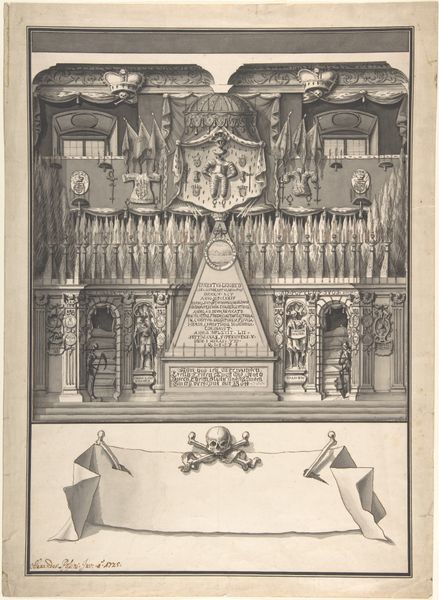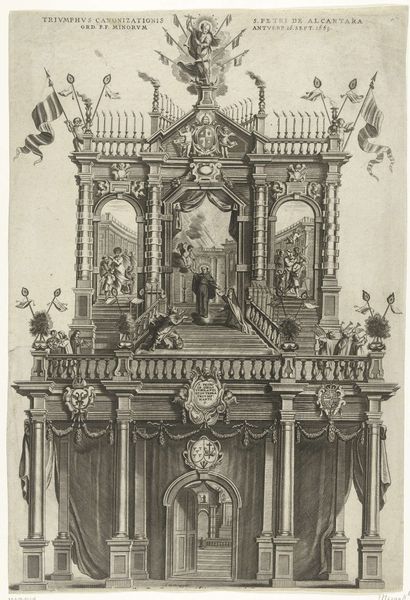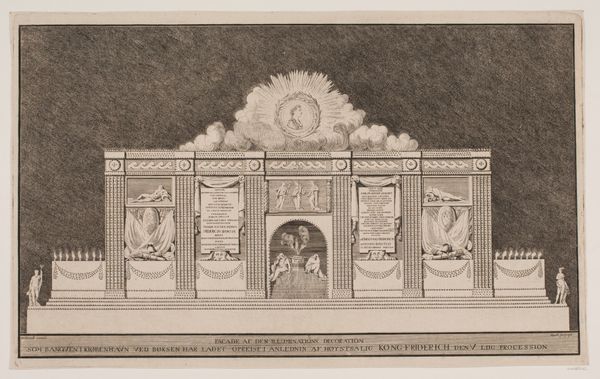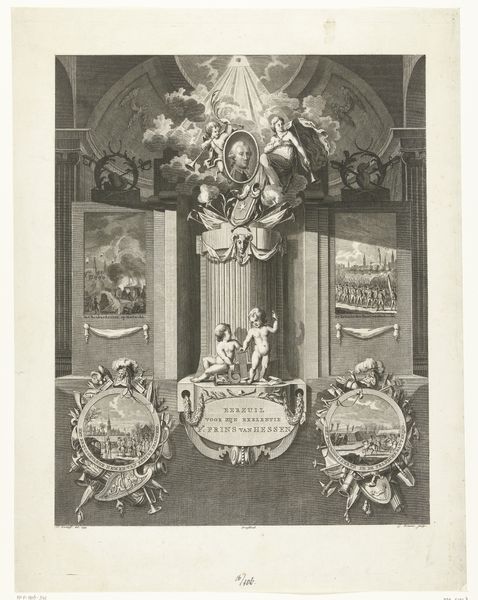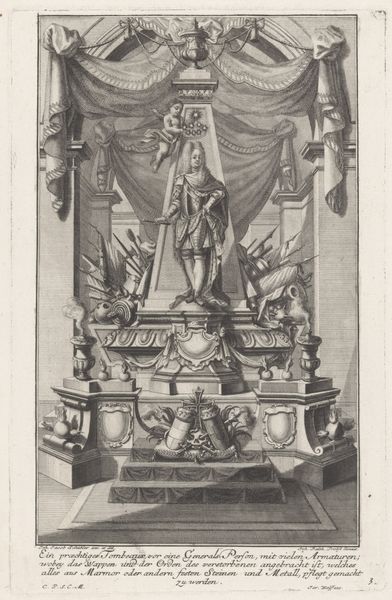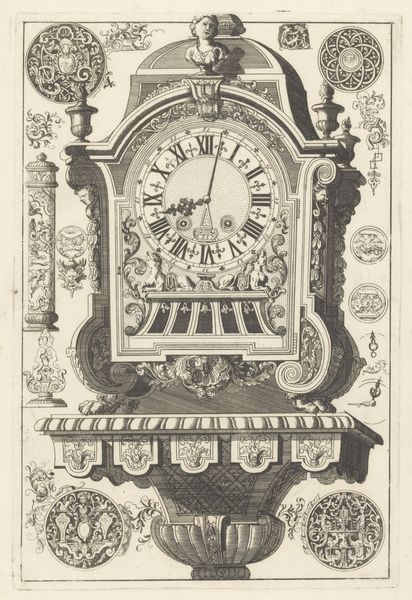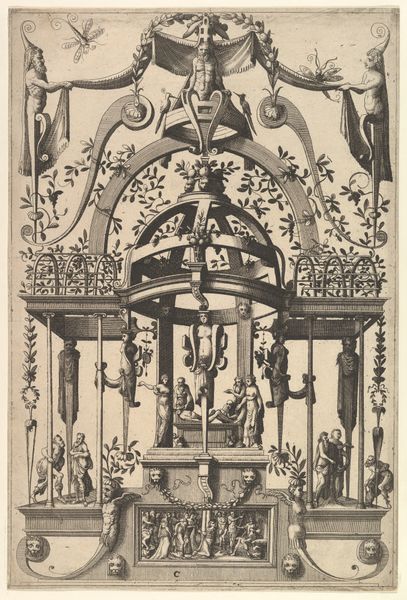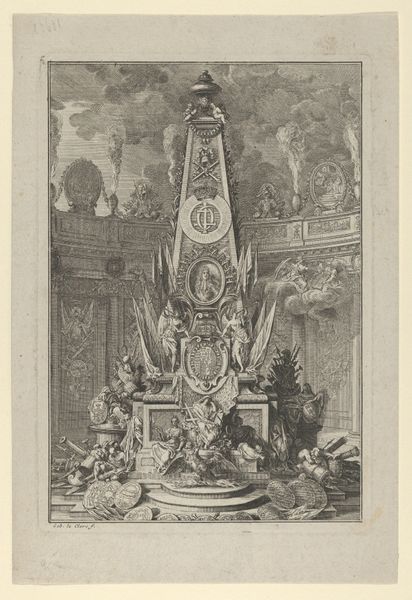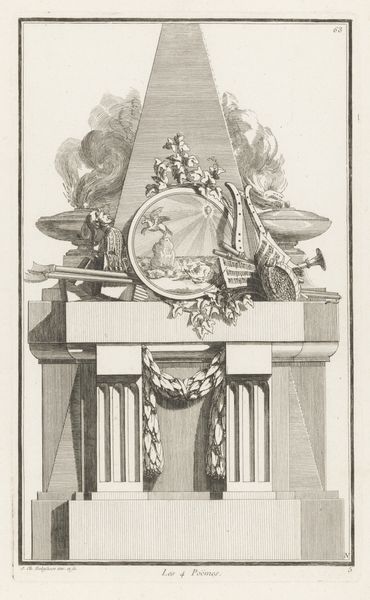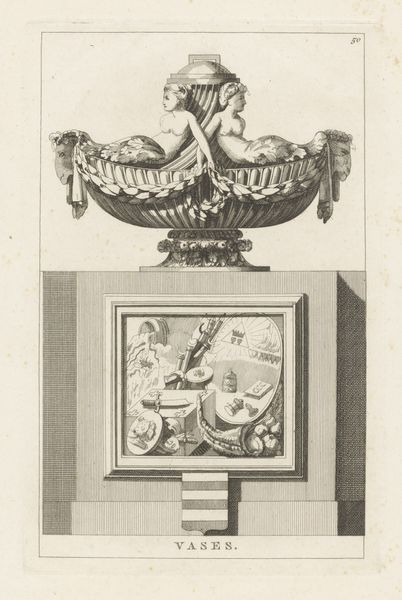
print, engraving
#
allegory
# print
#
old engraving style
#
geometric
#
engraving
Dimensions: image: 360 x 245 mm sheet: 404 x 332 mm
Copyright: National Gallery of Art: CC0 1.0
Thomas Kensett made this engraving, "The Master's Carpet," using the technique of etching. It is printed on a sheet of paper. The image contains many masonic symbols, but it is the method of production that I want to focus on. To create this print, Kensett would have covered a metal plate with a waxy, acid-resistant substance, then scratched away lines to expose the metal beneath. When dipped in acid, the exposed lines would be eaten away, creating grooves that hold ink. This labor-intensive process demanded precision and skill. Prints like this were important because they enabled the wide distribution of images. They allowed for the dissemination of knowledge, artistic ideas, and also, as in this case, social and political agendas. The print medium democratized image production by allowing multiple copies to be made and sold at a relatively low cost. So, next time you see an engraving, remember the physical and social processes involved in its creation. Consider how such prints helped to shape visual culture, and how they continue to influence our understanding of art today.
Comments
No comments
Be the first to comment and join the conversation on the ultimate creative platform.
